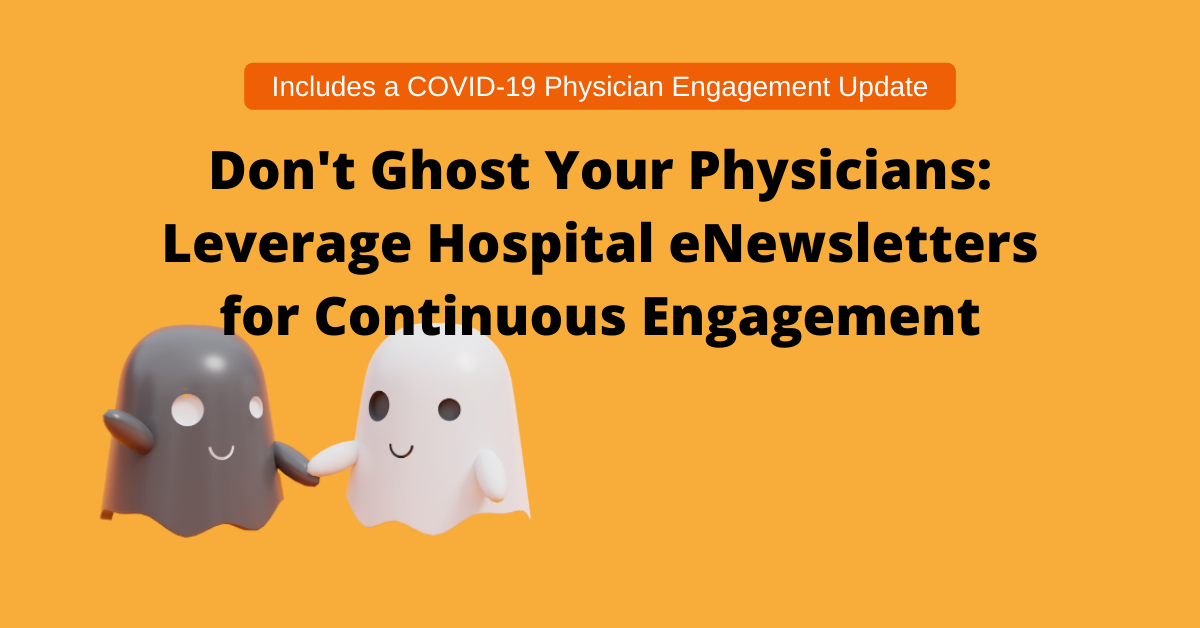
Over the last three months, hospitals and health systems have adapted to the COVID-19 pandemic on multiple levels—from turning tents into emergency rooms to exploring telehealth services. Throughout, they’ve had to communicate these changes to their healthcare professionals.
We took a step back to review how our clients have been using email during the pandemic to see if trends in communication might help them move into the next chapter in this worldwide disruption.
Looking at data over the past 12 months, our research showed the most effective way to disseminate that information is through email. Even in a crisis, email remains the best channel of communication.
Engagement Data Points to Email - Again
In our latest webinar presentation, we discussed these research results. Specifically, we analyzed key components of email deployment to see how the COVID-19 pandemic affected engagement: open rates, click rates, day-of-week/time-of-day sends, subject lines, and frequency of deployment.
Trend Snapshot
Here’s a snapshot of our analysis:
- Open rates increased by about 1.5 percentage points, per month. Currently, there is no sign of drop-off.
- Click rates are only up slightly, because most of the emails are informational with no real driving call to action.
- Time of engagement shifted to later hours in the day, likely due to healthcare professionals having more “free” time in the evenings.
- Health systems that don’t deploy email consistently realized a spike in engagement when sending necessary COVID communications. This confirms that healthcare professionals are hungry for content--particularly important for health systems that do not have regular email communication with their HCPs.
Contrary to what we see in our inboxes, email engagement didn’t rest on “COVID-19” or “coronavirus” in the subject line. In fact, data shows that subject lines without those terms actually performed better in the months of April and May. While these emails did all contain COVID-related content, they were not dependent on the subject line to pass through the more lenient filters email service providers (Gmail, Yahoo, Hotmail) have allowed during this time (be sure to listen to the webinar for more on this topic). What really matters is the relevancy and tone captured in the content.
Email Outreach: The Transition from Crisis to Normalcy
While some areas of the country are still very much in crisis mode, others are moving towards a transition-to-normalcy period. Marketers can use this time to prepare for that re-opening.
In the webinar, we covered three parts of an email outreach timeline—each addressing the current needs of a health system’s community. All require messaging that matches the severity of crisis.
1) Lockdown: Messaging focused on crisis response. Information should be logistical, instructing healthcare professionals of new protocols and practices—so they can then inform their patients.
2) Transition: Communications about how we will return to normal. Still logistical to a point, healthcare professionals will want to know about resuming elective surgeries or what role telehealth will continue to play during this time.
3) Return to Normalcy: A record of response. While not fully promotional, messaging can focus on how a health system responded. Highlight personal stories from physicians, nurses, leadership, or staff. What we’ve seen is that those in healthcare have been very willing to share these stories, and people are interested in hearing them.
Even in a crisis, email remains the best channel of communication.
Recording and communicating your health system’s response to the crisis is also important for future reputation building. This doesn’t mean just reporting about response from an “engineering” perspective. It should include any efforts such as virtual town halls, webinars, or patient/consumer outreach.
Email: An Asset, an Ally
When everything else in our world seemed to be toppling over, hospitals and health systems needed to stay strong. They still do. Using email as not just an asset, but as an actual ally, is an effective solution for deploying critical, relevant information at a time when your healthcare professionals need it most.


